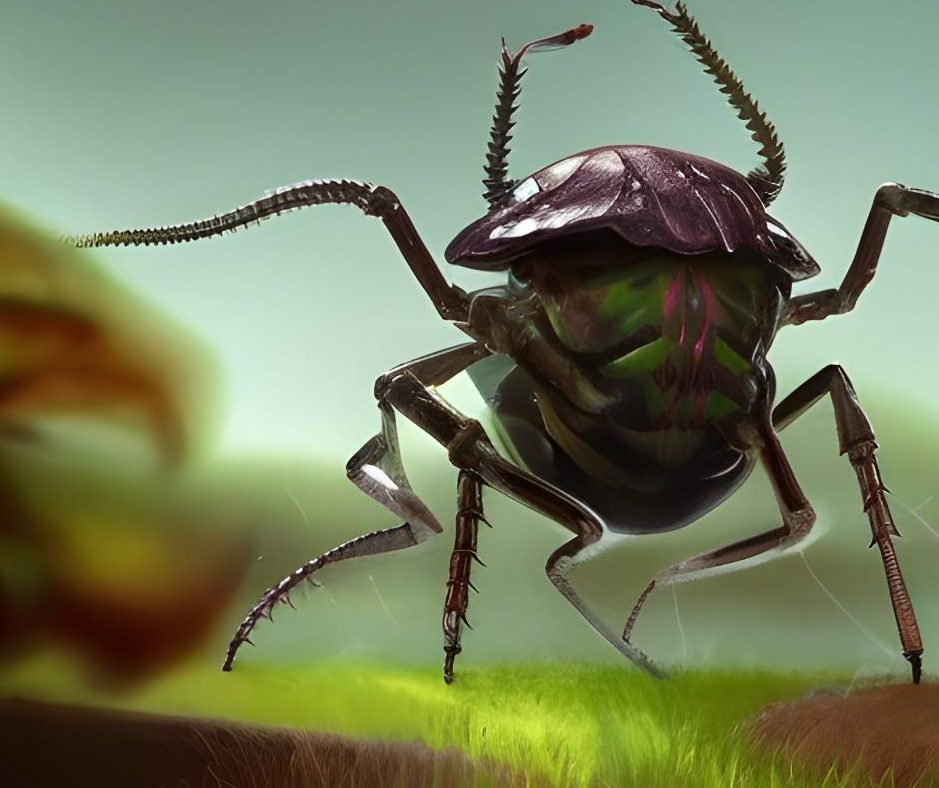Top 2 Destructive Insects in a Northern Lawn

A great looking lawn is hard to achieve, there are so many pieces to put together for your hard work to become successful. Countless hours spent manicuring your lawn could count for nothing if you don’t get a control of some pests. But if you really think about it there is only really 3 major ones to look out for in the Northern States. The others are sporadic and tolerable.
White Grubs
The most destructive pest in the Northern United States is the larvae of Scarab Beetles. Unseen until it’s too late, these beetles are very sneaky like Mr. Deeds.
In short, the beetles lay eggs just below the soil surface from May to July. The eggs develop into larvae and start to feed. Unfortunately, their favorite entree is the roots of your lawn! As the year progresses, they molt, increase in size, molt and increase again. All the time feeding at an increased pace. Then as winter approaches, they burrow down below the frostline and overwinter until spring. Then they pupate, emerge as adult beetles and start the whole process all over again.

White Grub Symptoms
Small to large patches of grass start to discolor, turn brown and die back. Initially visual symptoms resemble dry grass and is dry because the roots have been eaten away. If you inspect the area, the lawn surface should easily peel back in small to large patches. Inspection of the immediate soil beneath the surface should be evident larvae activity. Most damage generally becomes evident towards the end of summer, August to September and left untreated will continue until frost.

Damage to your lawn can also be caused by animals looking for a midnight snack. Skunks, raccoons, moles, opossums, armadillos, hogs and birds all like these nutty flavored protein crunchies! Severe damage can occur from animals that compounds the initial problem of having grubs in the first place.

White Grub Solutions
Luckily grubs are easy to control because they have a soft outer casing. Third instars that have overwintered are more difficult but once a preventative program is installed, the third instar population will deplete. This would be the case when a program is initiated. Afterwards predict about a 10 to 25% recurrence.
As always gauge your tolerance level before applying any pesticides. Maybe it’s not needed for you. Maybe its tolerable and not too severe.
You can control grubs towards the end of spring, before any damage is evident or wait until damage at the end of summer and post treat the areas affected.
Acelepryn is a newer insecticide that has changed the approach to grub management and would be the only insecticide I would recommend for seasonal control of grubs. It comes in both liquid and granular form. Applied just before egg hatch in your region; (Maytime is good) it will give you season long control of grubs. It will kill on contact and is residual in the soil for months to prevent any future instars developing. Additionally, at the labeled rate for grubs, it also controls a lot of other destructive pests including webworms. Tetrino is a similar pesticide with residual control and is fractionally cheaper than Acelepryn.
If you want to wait until damage is evident then there are a few post emergent insecticides on the market for control of grubs. Dylox granular is probably the easiest to apply and will kill on contact after being watered in. Sevin, Arena, Aloft, Triple Crown, and Imidacloprid are some contact insecticides that post treat White Grubs. Make sure you are following labeled directions.
Webworms
These are surface feeding insects that like to eat grass and create small silky tunnels in your lawn just above the thatch layer. They skeletonize, severe grass blades and build their little tunnels once air temperatures are above 78F. Initial patches will appear leading to coalescence of patches into large areas of yellow/brown stubby stemmed turf.
You might have notice adult moths flying around your garden at times in summer. Well during the day these adult moths stay in trees and bushes next to turf areas and when dawn or dusk occurs, they will fly over your lawn and cluster drop eggs. They take about 7 days to hatch and develop into sod eating machines!

Webworm Solutions
If you treated for grub control with Acelepryn or Tetrino in May-ish time you should not have a breakout of webworms. In the event that you have a breakout, you will need to apply a contact insecticide in order to gain control. Products containing bifenthrin, Imidacloprid and Carbaryl are among some that will provide control. Always follow label directions.
© 2023 LaPageBrands, LLC. All rights reserved.

